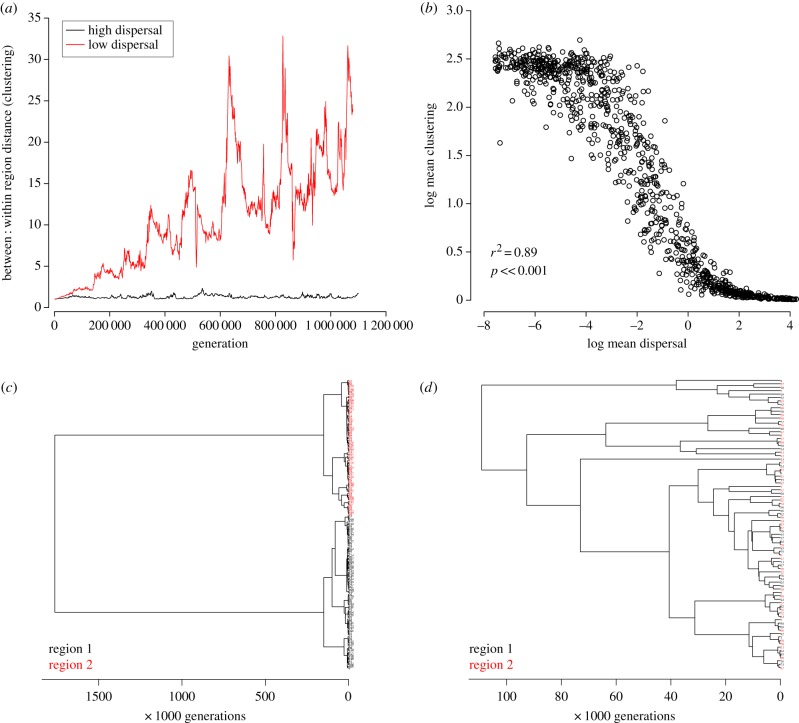Figure 1.
The evolution of ESUs above the species level. Consider two sets of species corresponding to higher clades, separated geographically (or ecologically). (a) At low dispersal rates between regions the ratio of between to within region phylogenetic distance increases over time. At high dispersal rates the ratio between : within region distance remains low. (b) Relationship between dispersal rate and phylogenetic clustering, measured as between : within region distance. (c) Phylogenetic pattern under low dispersal rates: distinct clades of closely related species emerge in each region, separated from each other by long internal branches. (d) Phylogenetic pattern under high dispersal rates: no clustering beyond that expected under neutral coalescence occurs and there is no evidence of occupation of different regions. These results apply equally to separation into different ecological guilds, in which case degree of isolation of metapopulations refers to rate of shifts between guilds rather than rates of geographical dispersal.

